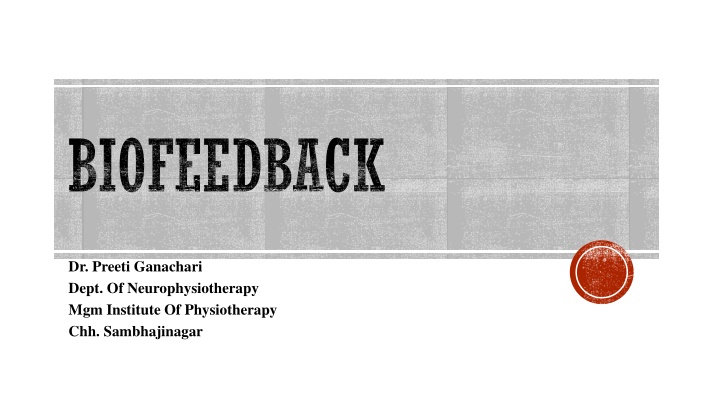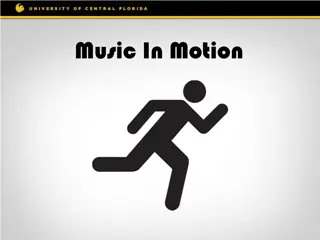BIOFEEDBACK
Biofeedback is a technique that assesses and improves physiological functions by providing feedback to patients through visual or auditory signals. Information is displayed to help patients control their bodily functions. Biofeedback instrumentation monitors physiological events like skin temperature and conductance activity.
Download Presentation

Please find below an Image/Link to download the presentation.
The content on the website is provided AS IS for your information and personal use only. It may not be sold, licensed, or shared on other websites without obtaining consent from the author.If you encounter any issues during the download, it is possible that the publisher has removed the file from their server.
You are allowed to download the files provided on this website for personal or commercial use, subject to the condition that they are used lawfully. All files are the property of their respective owners.
The content on the website is provided AS IS for your information and personal use only. It may not be sold, licensed, or shared on other websites without obtaining consent from the author.
E N D
Presentation Transcript
BIOFEEDBACK Dr. Preeti Ganachari Dept. Of Neurophysiotherapy Mgm Institute Of Physiotherapy Chh. Sambhajinagar
CONTENTS Introduction Definition Instrumentation General principles Biofeedback and Rehabilitation
Biofeedback is an instrumentation and technique which is used to accurately measure, process and feedback some reinforcing information via auditory or visual signals by electronic or electromechanical device especially for therapeutic purposes. Biofeedback- assesses physiological function- improves it by gaining control
Information is recorded and displayed in front of the patient. Various information can be reinforced back to the patient like kinaesthetic, visual, auditory, cutaneous, vestibular etc. Patient visualises function. Target is set either higher or lower than normal capacity of the patient. The aim is to achieve this target.
DEFINITION The process of furnishing an individual information of his body function, so as to get some control over it.
BIOFEEDBACK INSTRUMENTATION Designed to monitor some physiologic event, objectively quantify these monitoring and then interpret the measurements as meaningful information.
Peripheral Skin Temperature: Indirect measure- diameter of peripheral blood vessels Finger photo transmission: Indirect measure- peripheral vasoconstriction- photo plethysmograph Light sensors detect the volume change in blood, i.e. Decrease in volume- increased light sensor activity- vasoconstriction Increase in blood volume- decreased light sensor activity- vasodilatation Eg. Pulseoximeter
Skin Conductance Activity: Instrument applies small electrical voltage to the skin (palmar/volar) to measure the skin conductance Sweat gland activity- Determined by electro dermal activity or Galvanic Skin Response (GSR) Salt increases electrical conductivity Lie detector testing EMG, EEG, Pressure transducers and electrogoniometers
GENERAL PRINCIPLES Providing feedback: - Feedback should be appropriate for the change required - Feedback should be easily recognised and used by the patient Feedback- Proportional to the response - Strong feedback- Stronger response -Visual signals >> Auditory feedback, since its easier to make direct comparisons within and between trials
Biofeedback- Sensitive and specific Time Signal- Feedback- Response
Successful biofeedback: Externally provided signal and outcome are associated Feedback is accessible Willingness to practice Desire to control the process
BIOFEEDBACK & REHABILITATION Enhancer of therapy- adjunct Reliance on self (performance) >>> Reliance on therapist*
LIMITATIONS Relevancy: relevant stimuli important for desired motor response Neither too short nor too long Accuracy: The device should provide accurate information- appropriate device, apt technique of application Rapid information: Reduce the lag
USES PNI Postural Control SCI Muscle strengthening Hemiplegia Functional reeducation Dystonic conditions Providing relaxation CVA


